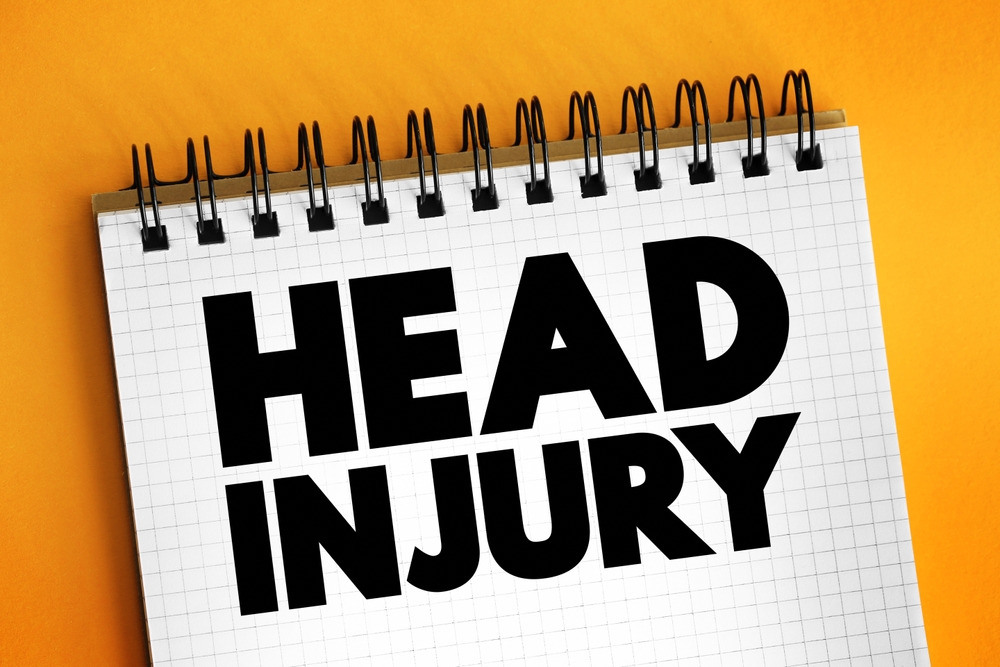A head injury claim’s value depends entirely on the specific details of your case, with no fixed amount or average. The value of each claim is based on factors like medical expenses, lost income, and the severity of the injury.
A personal injury attorney helps you compile this evidence to determine the total damages. Understanding the full scope of your losses is the first step toward seeking a resolution, and a lawyer can clarify how much your head injury claim may be worth based on your unique situation.
Key Takeaways for the Value of a Head Injury Claim
- The value of a head injury claim isn’t predetermined; it’s based on the sum of your specific economic and non-economic damages.
- Your final compensation amount includes all past, current, and future medical bills related to the injury.
- Lost wages from time off work and any impact on your future earning ability are significant factors in calculating a head injury settlement.
- Non-economic damages, like pain and suffering, address the personal, non-financial impact the injury has on your life.
- An experienced attorney can accurately calculate your claim’s total value and negotiate with insurance companies.
The Core Factors That Shape a Head Injury Claim’s Value

Each case is unique, and several key components contribute to the final head injury compensation amounts. These components are broadly categorized as economic damages (specific, calculable financial losses) and non-economic damages (intangible losses like pain and suffering).
An accurate valuation requires a detailed analysis of every way the injury has affected your life. Your attorney’s role is to document all these damages. This provides a clear and comprehensive picture of your total losses for negotiations with the insurance company.
Medical Expenses: Past, Present, and Future
Medical expenses are a primary component when calculating how much your head injury claim is worth. Smaller injuries will require less treatment than traumatic brain injuries (TBIs).
It’s a mistake to only consider the bills you have already received, as a claim must also account for future needs.
A thorough valuation of your claim needs to include all medical costs, such as:
- Immediate Medical Care: These costs cover the initial emergency room visit, hospitalization, surgeries, and any diagnostic imaging like MRIs or CT scans.
- Ongoing Treatments: You can include expenses for rehabilitation, prescription medications, and follow-up appointments with neurologists or other medical providers.
- Long-Term Care Needs: A severe TBI may require future medical support, including ongoing physical or occupational therapy, home health assistance, or special assistive devices.
An attorney works with medical and financial planners to accurately project the costs of all the future care your injury may demand.
Lost Wages and Diminished Earning Capacity
You may seek compensation for the income you lost while recovering. This calculation includes not just your base salary but also any missed bonuses, overtime, or commissions. Documentation like pay stubs and employment records helps establish the amount of income you lost.
Some head injuries permanently affect your ability to perform your job or work at all. In these cases, you may have a claim for diminished earning capacity. This calculation projects the income you have lost over the remainder of your working life.
Assessing this loss often involves vocational experts who can testify to how the injury has limited your career prospects.
Pain, Suffering, and Loss of Enjoyment of Life
Non-economic damages compensate you for the intangible, personal impact of the injury. These losses don’t have a specific bill attached, but are still a critical part of determining how much a head injury claim is worth.
An attorney can demonstrate these losses, which often include:
- Physical Pain and Suffering: This refers to the chronic headaches, nerve damage, and other physical pain you experience because of the head injury.
- Emotional Distress: Your claim may include compensation for the emotional and psychological impacts you face, such as depression, anxiety, frustration, or personality changes.
- Loss of Enjoyment of Life: This addresses your inability to participate in hobbies, sports, and social events that you previously enjoyed, which fundamentally changes your quality of life.
Types of Head Injuries and Their Impact on Settlement Value
The nature and severity of a head injury are central to determining the claim’s value. Different types of injuries result in vastly different prognoses, required medical treatments, and long-term impacts on a person’s life.
Medical records and your doctors’ testimony help establish the injury’s severity. The more severe and permanent the injury, the higher the potential TBI claim value.
The following are examples of different types of brain injuries and how they might affect settlement calculations:
- Concussions: Although often considered mild, a concussion is a serious brain injury that can lead to post-concussion syndrome, causing headaches, dizziness, and cognitive difficulties for months or even years. Some victims also experience delayed concussion symptoms, where issues such as memory loss, difficulty concentrating, or mood changes don’t appear until days or weeks after the accident.
- Skull Fractures: A break in the skull can lead to further complications, including damage to the brain tissue beneath the fracture, increasing the need for extensive medical intervention and recovery time.
- Hematomas: These are collections of blood, or clots, in or around the brain, which can exert pressure on brain tissue and lead to permanent damage if not treated promptly.
- Diffuse Axonal Injuries (DAI): This type of injury results from the shearing of the brain’s long connecting nerve fibers (axons) and is a common feature in severe TBIs, often leading to significant long-term impairment.
The Role of Evidence in Proving Your Claim’s Worth
Strong evidence builds a compelling case. You need more than just your word to show the full extent of your losses and justify the compensation you seek. An attorney helps you gather and organize all the documentation needed to substantiate your claim.
Every piece of evidence tells part of your story and connects the other party’s negligence to your injuries and financial damages. This documentation provides a clear, factual basis for negotiation.
Examples of critical evidence include:
- Medical Records: This includes every document related to your injury, from the initial ambulance report to detailed notes from your doctors, surgeons, therapists, and any other healthcare providers.
- Proof of Lost Income: Your attorney will gather pay stubs, W-2 forms, and a letter from your employer detailing your missed work, pay rate, and lost opportunities for overtime or promotion.
- Expert Witness Testimony: Medical professionals can explain your injury’s severity and prognosis, while vocational experts can describe its impact on your ability to work and earn a living.
- Personal Journals: A daily journal documenting your pain levels, emotional state, and how your injury affects your daily activities provides a powerful, firsthand account of your suffering.
6 Steps To Take To Protect Your Head Injury Claim’s Value

After receiving medical care for a head injury, certain actions can protect your legal rights and the potential value of your claim. The period following your initial treatment is when crucial evidence can be preserved and mistakes can be avoided.
These steps help you create a strong foundation for a personal injury claim:
- Follow All Medical Advice: Attend all follow-up appointments with your doctors and therapists. Adhering to your treatment plan shows you’re taking your recovery seriously and creates a clear record of your medical journey.
- Keep Detailed Records: Save all bills, receipts, and correspondence related to your injury. This includes medical invoices, prescription receipts, and even mileage logs for travel to and from doctor appointments.
- Document Your Daily Experience: Keep a simple journal detailing your physical pain, emotional struggles, and limitations. Note any activities you can no longer do or find difficult to perform.
- Avoid Discussing Your Case on Social Media: Insurance companies often look at social media profiles for posts that contradict your injury claims. Refrain from posting about your accident, your recovery, or your activities.
- Don’t Give a Recorded Statement to the Insurance Company: An insurance adjuster may ask you to provide a recorded statement. You don’t have to give one; their questions are often designed to find reasons to deny or reduce your claim.
- Contact a Personal Injury Attorney: A lawyer can advise you on your rights, handle all communications with the insurance company, and begin the process of building your case.
How a Personal Injury Lawyer Helps Boost the Value of Your Head Injury Claim
Calculating a head injury settlement and successfully pursuing your claim is a complex undertaking. A personal injury lawyer handles every aspect of your case, allowing you to concentrate on your recovery.
They bring experience and resources to the table that can significantly impact the final outcome. Your lawyer is your advocate, working to ensure the value of your claim gets fully recognized.
A lawyer’s involvement sends a clear message to the insurance company that you’re serious about receiving fair compensation.
Investigating and Gathering Evidence
Your lawyer conducts a thorough investigation into the accident that caused your injury. This includes gathering police reports, interviewing witnesses, and collecting all relevant documentation. They work to establish liability clearly, proving that another party’s negligence led to your harm.
Calculating the Full Value of Your Claim
Determining what your brain injury case is worth requires more than just adding up receipts. Your attorney calculates the total economic and non-economic damages, including projected future costs.
They may hire medical and economic experts to provide professional assessments of your long-term needs and lost earning potential, creating a comprehensive valuation of your claim. Understanding this process also helps set realistic expectations about how long a brain injury claim takes, since complex cases with higher damages often require more time to resolve.
Negotiating With Insurance Companies
An experienced lawyer handles all communications and negotiations with the insurance company. They know the tactics adjusters use and how to counter them effectively.
Your attorney presents a well-documented demand package and negotiates assertively for a settlement that reflects the true value of your damages.
Representing You in Court (if Necessary)
While most personal injury cases settle out of court, your lawyer can take your case to a judge if the insurance company refuses a fair settlement offer. This willingness to go to court often provides the leverage to secure a favorable settlement.
FAQ for How Much Is a Head Injury Claim Worth?
There is no average settlement for a head injury because each case is unique. The final amount depends on the severity of the injury, the total medical costs, lost income, and the long-term impact on the victim’s life.
A person with a catastrophic TBI will have a much higher claim value than someone with a concussion that resolves quickly.
There isn’t a single formula for calculating pain and suffering. Attorneys often use the multiplier method, where economic damages are multiplied by a number (typically between 1.5 and 5) based on the injury’s severity.
Another method is the per diem approach, which assigns a daily rate for pain and suffering from the date of the injury until Maximum Medical Improvement is reached. The final figure is heavily influenced by evidence about how the injury has affected your daily life.
Several key factors determine the settlement value, including the total amount of past and future medical bills, lost wages, loss of future earning capacity, the severity and permanency of the injury, and the level of physical pain and emotional distress.
The strength of the evidence proving the other party’s fault also plays a role.
Texas follows a modified comparative negligence rule, which means you can still recover damages if you were 50% or less at fault for the accident. However, your percentage of blame reduces your final compensation award. You cannot recover any damages if you’re 51% or more at fault.
The timeline for settling a head injury claim can vary widely. Simple cases with clear liability and minor injuries may settle in a few months. Complex cases involving severe traumatic brain injuries and disputes over fault may take longer, especially if they proceed to a lawsuit and trial.
The timeline often depends on reaching maximum medical improvement, as you cannot know the full value of the claim until your long-term prognosis is clear.
Take the First Step Today

Your decisions now can affect your financial security for years to come. At Ryan Orsatti Law, we focus on helping individuals in Texas who have sustained serious injuries. Working with the best traumatic brain injury lawyer can make a critical difference in the outcome of your case, giving you the support and advocacy you need. Let us handle the legal complexities so you can focus on healing.
Contact Ryan Orsatti Law today at 210-525-1200 for a free conversation about your case.
